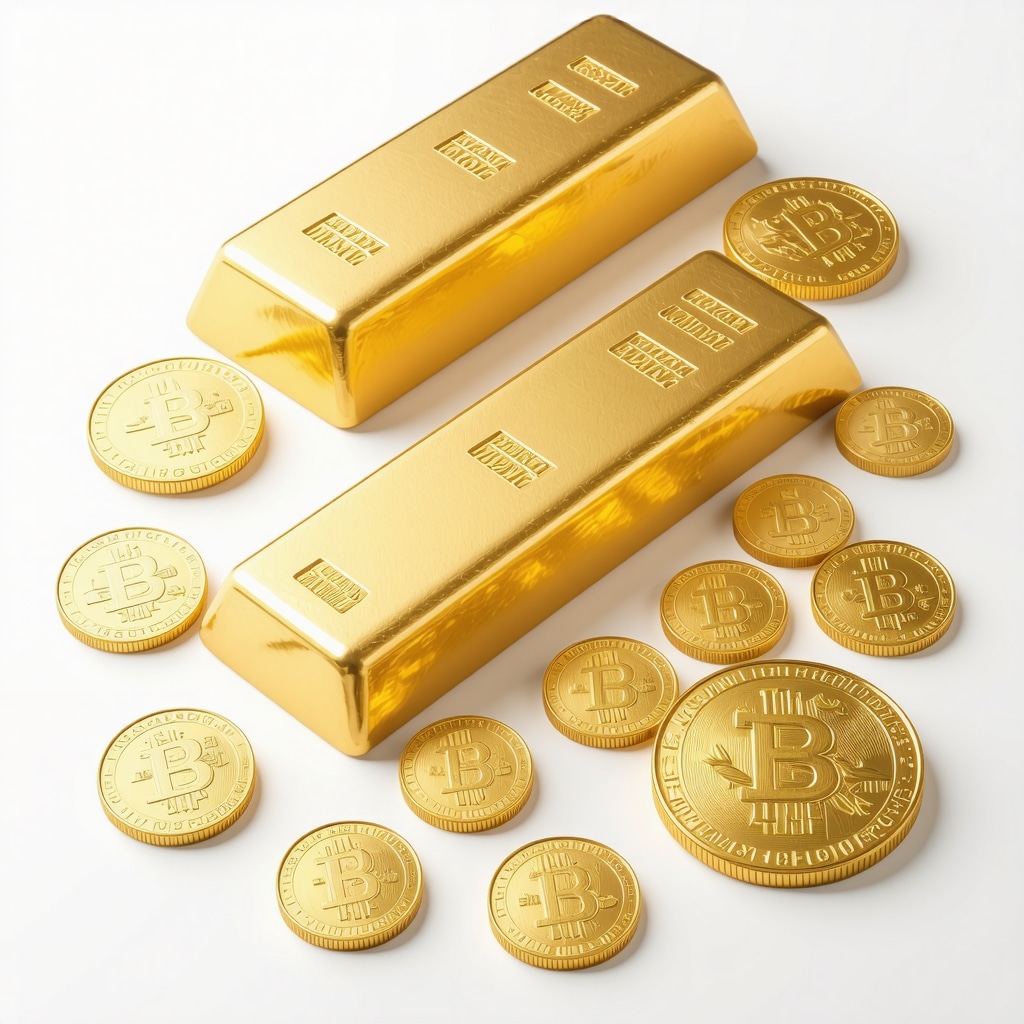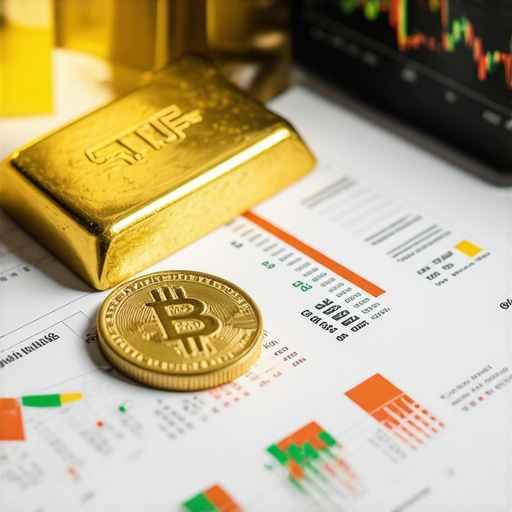How I Discovered the Fascinating World of Gold Bullion
When I first dipped my toes into investing in precious metals, I found myself overwhelmed by the variety of gold bullion options available. Gold bars, coins, and rounds all seemed appealing, yet each carried its own unique charm and investment considerations. My initial purchase was a small gold coin, which felt tangible and historic, but as I explored more, I realized that understanding types of gold bullion was essential to making smart choices.
What I Learned About Gold Bars: The Classic Investment Anchor
Gold bars instantly resonated with me because of their pure, straightforward value. They usually come in larger sizes and often have lower premiums compared to coins or rounds due to less intricate design work. I appreciated their purity and the ease of stacking them in my secure safe. However, I also discovered the importance of verifying authenticity, which led me to find trusted resources like this comprehensive guide on buying gold bars safely. This guide helped me avoid risks and understand best practices for secure physical investment.
Why Gold Coins Captivated Me More Than I Expected
Gold coins, such as the American Gold Eagle or Canadian Maple Leaf, carry rich history and government backing, which I found quite reassuring. Their collectibility and legal tender status add layers of trust and liquidity I hadn’t initially considered. Although coins often come with higher premiums, their recognizability made me feel more confident when reselling or trading. I often recommend newcomers check out detailed articles like this step-by-step guide to buying gold coins safely to understand market nuances and avoid costly missteps.
The Subtle Appeal of Gold Rounds and When They Fit My Strategy
Gold rounds fascinated me because they blend some advantages of bars and coins. They generally have lower premiums than coins and come in smaller weights, which allowed me to diversify without a huge upfront cost. Although they lack government backing and legal tender status, their wide acceptance among private dealers made them a flexible choice for my portfolio. I found their designs often more artistic, which added a personal touch to my collection.
How Do I Decide Which Type of Gold Bullion Suits My Investment Goals?
Choosing between bars, coins, and rounds boils down to my priorities: liquidity, budget, and personal preference. Bars offer cost efficiency for larger investments, coins bring trust and ease of resale, and rounds provide affordable diversification. For investors starting out, I suggest balancing these types to harness their respective benefits. Exploring physical gold investment strategies comparing bars and coins helped me understand these trade-offs deeply.
I’d love to hear about your experiences or preferences with gold bullion types. Have you found one that fits your style or strategy best? Share your thoughts or questions below — I believe community insights make us all smarter investors.
For further enriching your knowledge, the World Gold Council offers authoritative insights into gold’s role in portfolios and market trends, which I have found invaluable in shaping my investment mindset (World Gold Council).
Balancing Authenticity and Convenience: The Role of Verification in Gold Bullion Investments
One of the most critical lessons I learned early in my gold investing journey is the paramount importance of verifying authenticity. Whether you’re dealing with gold bars, coins, or rounds, counterfeit risks exist and can severely impact your portfolio. I found that utilizing professional assay services and buying from reputable dealers with transparent provenance is non-negotiable. For example, the best practices to ensure authenticity in physical gold investments have been instrumental in helping me safeguard my holdings against fraud and maintain confidence in my asset’s value.
Understanding Market Dynamics: How Gold Supply and Demand Shape Your Investment Strategy
Another nuanced aspect that deepened my expertise is grasping how global gold supply and demand influence bullion prices. Central bank purchases, mining output, and consumer demand for jewelry or technology all interplay to create market fluctuations. Keeping abreast of these trends enables me to time acquisitions and sales more strategically. For those interested in dissecting these forces, this analysis on gold supply and demand provides a comprehensive framework to anticipate market shifts rather than react blindly.
Can Advanced Gold Trading Techniques Improve My Market Timing and Profitability?
As I honed my investment approach, I began exploring advanced trading techniques tailored to gold’s unique market behavior. Techniques such as leveraging technical indicators, understanding seasonal price patterns, and employing stop-loss orders helped me navigate volatility with greater confidence. These methods transform gold investing from a static buy-and-hold into a dynamic, responsive strategy. Resources like proven gold trading strategies have been invaluable in equipping me with the tools to maximize returns while mitigating risk.
For authoritative insights and ongoing updates on gold market trends, the World Gold Council remains a trusted source, offering data-backed perspectives and policy analysis that inform smarter investing (World Gold Council).
If you found these expert perspectives helpful, please share this article with fellow investors or comment below with your own strategies and questions. Also, consider exploring more detailed guides on gold ETFs and mutual funds for a diversified approach to precious metals investing.
When Does Diversification Within Gold Bullion Truly Pay Off?
Reflecting on my own journey, I realized diversification within gold bullion isn’t just about owning various forms like bars, coins, and rounds — it’s about tailoring that mix to nuanced market conditions and personal financial goals. For example, during periods of heightened economic uncertainty, I leaned more heavily on government-backed coins for their liquidity and trust, while in more stable times, I allocated a larger share to bars to benefit from lower premiums.
But it’s not a static decision. I found that continually reassessing my portfolio in light of global events, inflation trends, and shifts in demand helped me optimize my holdings. This dynamic approach contrasts sharply with the “buy and forget” mentality I initially had. If you want a deep dive into how to balance these bullion types effectively, this detailed comparison of bars and coins gave me a fresh perspective on strategic allocation.
What I Wish I Knew About Storage and Security Early On
One of the subtler complexities I encountered was the challenge of secure storage. Holding physical gold means grappling with questions of safekeeping — from home safes to bank safety deposit boxes, or even third-party vault services. Initially, I underestimated the importance of insurance and discreet storage. Over time, I learned that a well-thought-out storage plan not only protects assets from theft but also preserves their resale value by maintaining pristine condition.
For anyone just embarking on this path, I can’t stress enough the value of researching best practices for securing your physical gold. It’s an ongoing process, requiring vigilance and sometimes tough choices about accessibility versus security.
How Do I Balance My Desire for Tangible Gold with the Convenience of Digital Alternatives?
This question became increasingly relevant as I explored broader gold investment opportunities. While physical bullion offers a comforting tangibility and a hedge against digital asset risks, I also recognized the benefits of gold ETFs and mutual funds for liquidity and ease of management. Integrating these digital instruments required me to rethink my strategy — not as a replacement but as a complement to my physical holdings.
Exploring resources like top gold ETFs and mutual funds helped me identify options that align with my risk tolerance and growth expectations. This hybrid approach feels more holistic, especially for those who want exposure to gold without the complexities of storage and authenticity verification.
It’s a question I’m curious to hear your thoughts on: Have you embraced physical gold exclusively, or do you integrate digital gold investments into your portfolio? Your insights and experiences enrich this conversation, so please feel free to share them below.
One invaluable resource I continually turn to for authoritative market insights and trend analysis is the World Gold Council. Their reports have helped me stay ahead of shifting dynamics and informed many of my strategic decisions.
Finding the Right Timing: What I’ve Learned About Market Cycles and Price Movements
Gold’s price movements often feel enigmatic, but with time and study, I began to discern patterns related to economic cycles, geopolitical tensions, and central bank activities. While I don’t claim to predict the market perfectly, understanding these drivers gave me a tactical edge. For example, I found that during periods of rising inflation expectations, gold tends to rally, which informed when to scale my acquisitions.
If you’re looking to deepen your analytical skills, I highly recommend exploring mastering gold market analysis. This guide helped me interpret indicators and refine my entry and exit points, reducing emotional decision-making.
As I continue this journey, I’m eager to dive deeper into advanced strategies and would love to hear about your own approaches to timing and market analysis. Feel free to comment or start a discussion below — sharing knowledge is the best way to grow together in this fascinating realm of gold investing.
Decoding the Intricacies of Gold Purity and Its Impact on Investment Value
As my gold investment journey matured, I gravitated towards a deeper appreciation of gold purity standards and their subtle influence on market value. While the standard 24-karat gold (99.99% pure) is often the benchmark for bullion, I discovered that even slight variations in purity could affect liquidity and pricing dynamics, especially when dealing with vintage coins or artisanal rounds. This nuanced understanding empowered me to assess premiums with greater precision and select bullion that aligns with both my portfolio goals and resale potential.
Engaging with resources such as best practices to ensure authenticity in physical gold investments reinforced my commitment to verifying purity through reputable assay certificates and refining my due diligence processes.
Leveraging Macroeconomic Indicators to Anticipate Gold Market Movements
Gold’s role as a financial safe haven is well-known, but I found that truly mastering its market requires a sophisticated interpretation of macroeconomic signals. Inflation data, currency strength, geopolitical tensions, and central bank policies all interplay to influence gold’s trajectory. I tailored my acquisition and divestment timing by closely monitoring these variables, integrating insights from authoritative analyses like those provided by the World Gold Council. Their comprehensive market reports offered granular data that helped me anticipate shifts rather than merely reacting to price changes.
What Advanced Hedging Techniques Can Enhance a Diversified Gold Portfolio?
In exploring portfolio resilience, I began incorporating advanced hedging techniques that go beyond simple physical gold ownership. Strategies such as options trading on gold futures, pairing bullion with gold mining stocks, and diversifying into gold-backed ETFs and mutual funds presented sophisticated layers of risk management and return optimization. These approaches demanded a steep learning curve but ultimately enriched my investment framework, allowing me to navigate volatility with agility.
For those interested in these complex strategies, I recommend delving into top gold ETFs and mutual funds and gold mining stocks risks and rewards to understand the multifaceted nature of gold investment instruments.
Embracing Technological Innovations for Secure and Efficient Gold Management
Advancements in technology have revolutionized how I manage and protect my gold assets. From blockchain-based provenance verification to secure digital vaults, these innovations have added layers of transparency and convenience to traditional bullion ownership. I’ve integrated these tools to streamline transactions and minimize counterparty risks, enhancing the overall robustness of my holdings.
This intersection of technology and precious metals is an evolving frontier. Staying informed through expert platforms and continuous education is crucial to capitalizing on these developments.
Inviting You to Share Your Sophisticated Gold Investment Experiences
My journey has been richly textured, shaped by continuous learning and adaptation. I invite you, fellow investors and enthusiasts, to enrich this dialogue by sharing your advanced strategies, challenges, and insights regarding gold bullion investing. How do you integrate physical and digital assets? What hedging tactics have proven effective in your portfolio? Engage with me in the comments below so we can collectively elevate our mastery of this timeless asset.
Things I Wish I Knew Earlier (or You Might Find Surprising)
Gold’s Value Is More Than Just Weight
When I began, I thought gold’s worth was only about its pure weight, but I soon realized factors like minting quality, historical significance, and rarity can add surprising value. For example, some coins carry premiums far beyond their gold content because of their collectibility or limited mintage. This extra dimension made me appreciate the subtle art of choosing bullion beyond just karats and grams.
Authenticity Checks Are a Lifelong Commitment
Early on, I underestimated how vital ongoing authenticity verification is. Even after buying from trusted dealers, I learned to periodically reassess my holdings using assay services and technology innovations like blockchain provenance. This vigilance protects not only my investment but also my peace of mind.
Storage Security Is More Than a Box Under the Bed
Storing physical gold safely turned out to be a much deeper topic than I expected. It’s not just about locking it away but balancing accessibility, insurance, and climate conditions to preserve value. I wish I’d started with a professional safe or bank safety deposit box, rather than a rushed home safe setup.
Market Timing Is Part Art, Part Science
I initially thought gold was a simple buy-and-hold investment, but learning to interpret macroeconomic signals and price patterns transformed my approach. Watching inflation trends or central bank moves helped me make smarter entry points. This ongoing market study made gold investing feel dynamic and engaging.
Digital Gold Complements Physical Bullion, Not Replaces It
At first, I was skeptical about gold ETFs or mutual funds, but integrating them alongside physical bullion created a more flexible portfolio. The ease and liquidity of digital gold investments provide balance, especially when immediate access or storage challenges arise.
Diversification Within Gold Can Be Strategic
Owning a mix of bars, coins, and rounds isn’t just about variety for variety’s sake. Each serves different purposes — bars for cost efficiency, coins for liquidity, rounds for affordable diversification. Tailoring this mix to market conditions and personal goals proved key to maximizing benefits.
Resources I’ve Come to Trust Over Time
World Gold Council: Their deep market reports and trend analyses have been my go-to for understanding gold’s global role and economic drivers. It’s like having a trusted expert consultant always available (World Gold Council).
Buying Gold Now Guides: From learning how to buy gold bars safely to mastering advanced trading techniques, these comprehensive resources helped me avoid costly mistakes and sharpen my strategies.
Top Gold ETFs and Mutual Funds: Exploring digital gold options through detailed reviews like best gold ETFs and mutual funds for stable income gave me confidence to balance physical and digital holdings.
Gold Market Analysis Articles: Deep dives into gold supply and demand and market analysis insights helped me anticipate price movements more effectively.
Physical Gold Security Tips: Learning best practices for safeguarding physical gold was a game changer for protecting my assets and peace of mind.
Parting Thoughts from My Perspective
Investing in gold bullion has been a rewarding journey full of learning curves and eye-opening insights. From understanding the nuanced differences between bars, coins, and rounds to appreciating the importance of authenticity and secure storage, each step deepened my connection to this timeless asset. Gold’s unique blend of tangible value and market dynamics makes it unlike any other investment I’ve encountered.
What truly stands out to me is the balance between patience and adaptability — recognizing when to hold steady and when to respond to market shifts. Whether you lean toward physical bullion, digital gold investments, or a thoughtful combination of both, the key is ongoing education and community engagement.
If this resonated with you, I’d love to hear your thoughts or experiences. Share your story or questions in the comments below, and let’s continue growing together in this fascinating world of gold investing.










